I'm currently trying to use the scikit learn package for its neural network functionality. I have a complex problem to solve with it, but to start out I am just trying a couple of basic tests to familiarize myself with it. I have gotten it to do something, but it isn't producing meaningful results. My code:
import sklearn.neural_network.multilayer_perceptron as nnet
import numpy
def generateTargetDataset(expression="%s", generateRange=(-100,100), s=1000):
expression = expression.replace("x", "%s")
x = numpy.random.rand(s,)
y = numpy.zeros((s,), dtype="float")
numpy.multiply(x, abs(generateRange[1]-generateRange[0]), x)
numpy.subtract(x, min(generateRange), x)
for z in range(0, numpy.size(x)):
y[z] = eval(expression % (x[z]))
x = x.reshape(-1, 1)
outTuple = (x, y)
return(outTuple)
print("New Net + Training")
QuadRegressor = nnet.MLPRegressor(hidden_layer_sizes=(10), warm_start=True, verbose=True, learning_rate_init=0.00001, max_iter=10000, algorithm="sgd", tol=0.000001)
data = generateTargetDataset(expression="x**2", s=10000, generateRange=(-1,1))
QuadRegressor.fit(data[0], data[1])
print("Net Trained")
xt = numpy.random.rand(10000, 1)
yr = QuadRegressor.predict(xt)
yr = yr.reshape(-1, 1)
xt = xt.reshape(-1, 1)
numpy.multiply(xt, 100, xt)
numpy.multiply(yr, 10000, yr)
numpy.around(yr, 2, out=yr)
numpy.around(xt, 2, out=xt)
out = numpy.concatenate((xt, yr), axis=1)
numpy.set_printoptions(precision=4)
numpy.savetxt(fname="C:\\SCRATCHDIR\\numpydump.csv", X=out, delimiter=",")
I don't understand how to post the data it gives me, but it spits out between 7000 and 10000 for all inputs between 0 and 100. It seems to be correctly mapped very close to the top of the range, but for inputs close to 0, it just returns something near 7000.
EDIT: I forgot to add this. The network has the same behavior if I remove the dummy training to y=x, but I read somewhere that sometimes you can help a network along by training it to a different but closer function and then using that already weighted network as a starting ground. It didn't work but I just hadn't taken that bit out yet.
